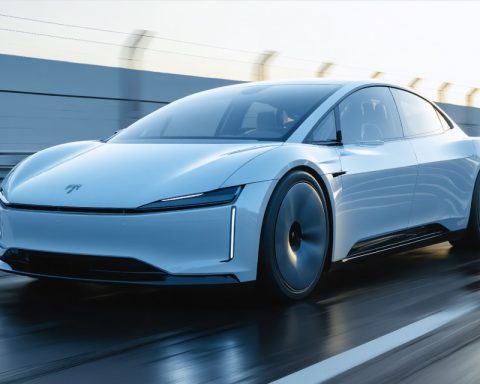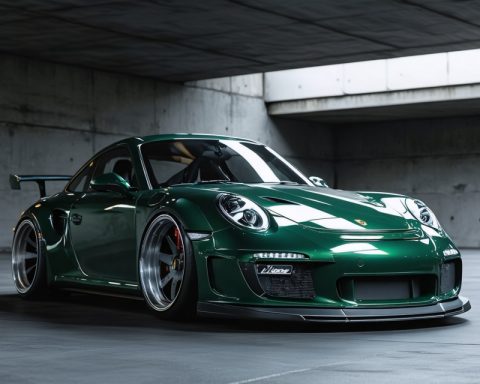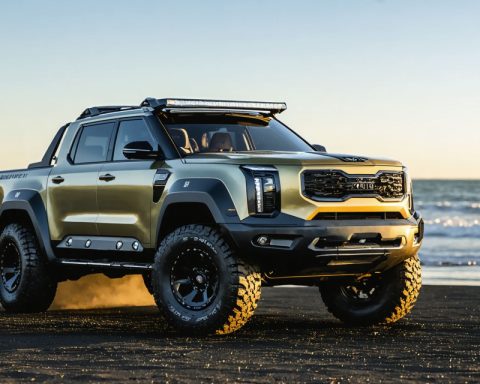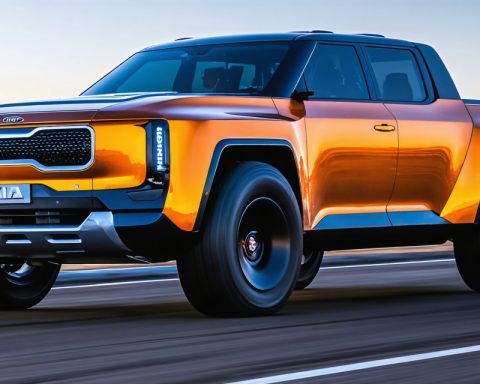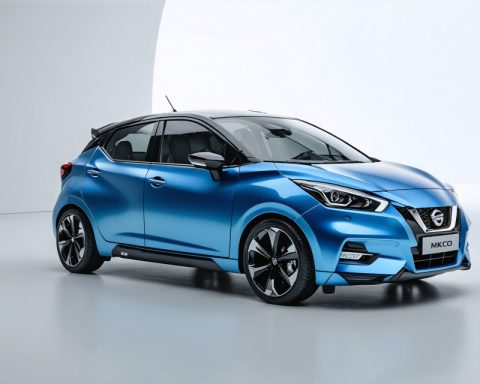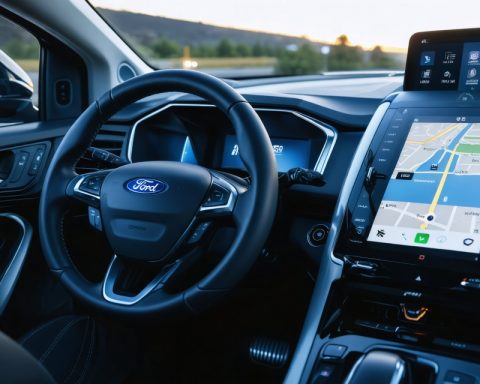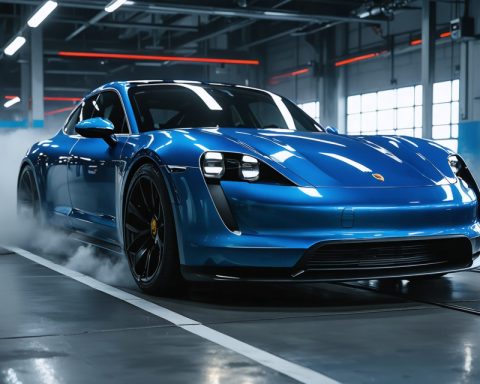- Four EV-exclusive carmakers—Tesla, BYD, Li Auto, and Series Group—emerge with positive operating margins in the competitive 2024 market.
- Tesla leads with a 7.2% margin, but an upward trend in BYD’s 6.4% margin indicates a potential shift in dominance.
- Vertical integration is key to success for these profitable players, streamlining battery, drivetrain, and software production.
- Chinese brands like Zeekr, Xpeng, and Leapmotor are reducing losses, showcasing agility in a challenging environment.
- Nio, Polestar, and Rivian remain unprofitable, while Lucid struggles with a severe -374% margin despite external funding.
- Mastering integration and scale is essential for future dominance in the EV industry, along with strategic adaptation and innovation.
The world of electric vehicles is in the midst of a quiet revolution, as four EV-exclusive carmakers defy the odds to emerge with positive operating margins amidst a booming yet challenging industry landscape. While the race for electrification accelerates, only Tesla, BYD, Li Auto, and the lesser-known Series Group stand out as beacons of profitability in 2024, amidst a sea of financial red ink in the sector.
The data, reflecting findings from industry leader Rho Motion, reveals that while sales volumes surge, profitability continues to evade the majority. It is the nuanced strategies of these profitable players that tell a compelling story. Notably, Tesla, with a 7.2% operating margin, showcases a slight lead over BYD’s 6.4%. However, the undercurrents of their trajectories capture a tale of shifting dominance. Tesla’s margin has seen a decline from its previous highs, hinting at potential vulnerability, whereas BYD’s robust upward trend signals a looming overtaking of Tesla in the race for profitability.
Vertical integration emerges as the magic formula for these frontrunners. Both Tesla and BYD have mastered this approach, weaving together the production of batteries, drivetrains, and software under their roofs. This strategy not only streamlines operations but also establishes a cost-controlling fortress. Li Auto and Series Group follow suit, thriving within a similarly integrated model.
The divide between those with integrated control and those without is starkly evident, as indicated by the ongoing struggles of brands lacking such autonomy in their supply chains. This lesson echoes beyond just financial ledgers, marking the strategic blueprint for future contenders in the EV marathon.
The landscape, however, is not solely a tale of success. Chinese brands are boldly closing the gap, embodying the agile spirit of startups like Zeekr, Xpeng, and Leapmotor. Each has made commendable strides, chipping away at their operating losses with the tenacity of underdogs. Yet, the shadows of deeper financial despair haunt others. Nio, Polestar, and Rivian, despite trimming losses, remain in negative territory, with Lucid experiencing a particularly severe struggle. Its staggering -374% margin in 2024 underscores the harsh reality of steep operational inefficiencies.
Lucid, buoyed by Saudi sovereign wealth, gracefully sidesteps the commercial pressures suffocating its weaker peers. Nonetheless, this reliance on external lifelines unveils the tightrope many EV makers walk, balancing innovation with financial viability.
As the EV tides shift, the story is one of competition and evolution. Tesla, the lone non-Chinese name in the profitability spotlight, finds its laurels increasingly contested by price wars and rising competition. The journey forward for these pioneers and their emerging challengers will undoubtedly be one of strategic adaptation and relentless pursuit of efficiency.
The key takeaway resonates with clarity: mastering the intricacies of integration and scale is vital, not just for survival but for dominance in an electrifying world. As the silent revolution gallops ahead, the path forged by these trailblazers could well redefine the industry’s contours, setting new standards in an era of sustainable transport.
Discover How Top EV Makers Thrive with Strategic Integration
The Current EV Landscape: Profitability and Challenges
The world of electric vehicles (EVs) has experienced rapid growth, yet only a select group of manufacturers have managed to achieve financial success amidst intense competition. In 2024, Tesla, BYD, Li Auto, and the relatively obscure Series Group have emerged as profitability leaders, navigating the industry’s challenges with strategic prowess. Despite increasing sales volumes across the board, the majority of EV companies continue to grapple with achieving positive operating margins.
Vertical Integration: The Secret to Success
What is Vertical Integration?
Vertical integration refers to a strategy where a company controls multiple stages of its production process. For EV manufacturers, this means managing the production of key components like batteries and drivetrains in-house.
– Advantages: This approach reduces dependency on external suppliers, enabling better cost control, reduced production delays, and improved quality assurance.
– Implementation: Tesla and BYD exemplify this strategy effectively by incorporating battery production, software development, and vehicle manufacturing under one roof.
Why Tesla and BYD Stand Out
– Tesla’s Operating Margin (7.2%): Although Tesla’s margin has declined from previous highs, it remains the most profitable EV manufacturer. Its pioneering approach and wide market reach are crucial factors.
– BYD’s Rising Trajectory (6.4%): With its vertical integration model, BYD is poised to surpass Tesla. Its focus on cost optimization and market expansion contributes to this growth.
The Struggle of Other EV Makers
While some companies thrive, others face significant challenges:
– Nio, Polestar, and Rivian: Despite reducing losses, these brands remain unprofitable.
– Lucid’s Steep Struggle: With a -374% margin in 2024, Lucid’s financial inefficiencies are stark. Reliance on external funding, such as Saudi sovereign wealth, showcases the precarious balance many EV makers maintain.
Emerging Chinese Competitors
Chinese brands like Zeekr, Xpeng, and Leapmotor are making noteworthy progress by adopting agile strategies often seen in startups:
– Market Adaptation: These companies focus on meeting consumer demands and optimizing production to close the profitability gap.
– Agility and Innovation: Their approach underlines the importance of nimbleness in a rapidly evolving industry.
Insights and Predictions
Industry Trends
1. Rising Competition: The entry of new players will intensify price wars, potentially impacting profitability.
2. Focus on Efficiency: EV makers will increasingly prioritize operational efficiencies and cost control.
Strategic Recommendations
– Embrace Vertical Integration: New entrants should consider adopting vertical integration to reduce costs and enhance efficiency.
– Invest in R&D: Continuous innovation is necessary to stay ahead in the competitive landscape.
– Strategic Partnerships: Collaborations can provide essential support for technological advancements and market reach.
Actionable Tips for Consumers
– Research Brands: Look for manufacturers with proven integration and cost efficiency.
– Compare Features and Prices: Consider both immediate costs and long-term value based on efficiency and innovation.
By understanding the dynamics of the EV industry and adopting informed strategies, both manufacturers and consumers can navigate the evolving landscape effectively.
For authoritative insights on the automotive sector, visit Forbes and Bloomberg.


